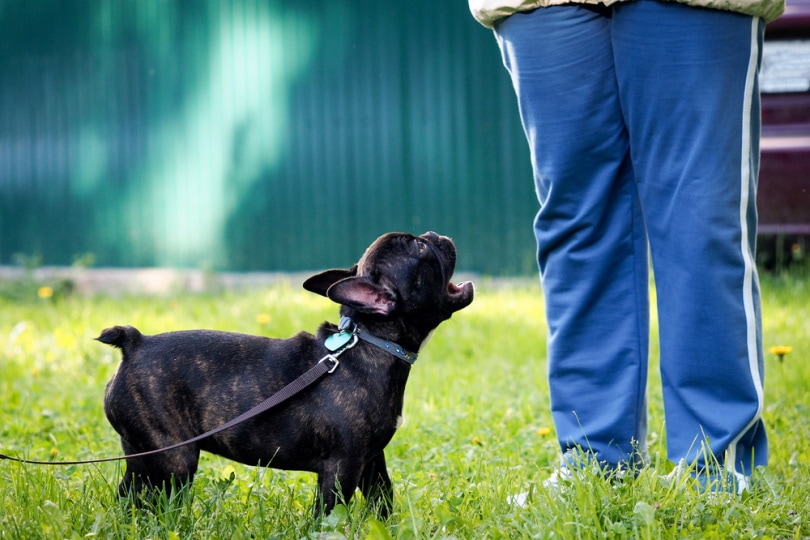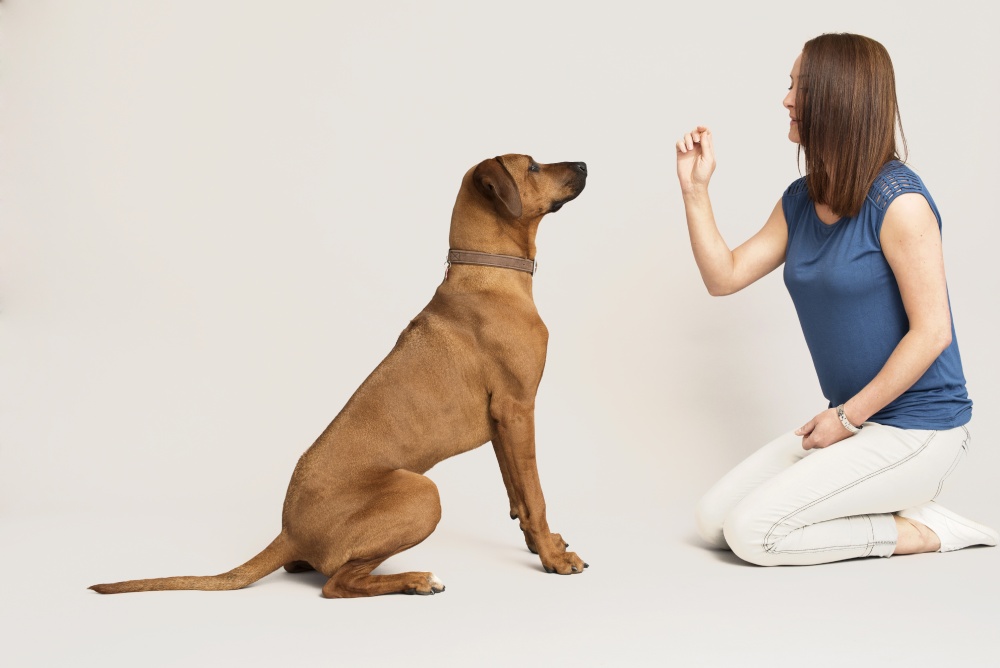Teaching your dog to “speak” or bark on command is a fun trick and a helpful way to manage excessive barking. When you have the cue for “speak” down, you can reward your dog for barking just once and stop chain barking that goes on for several minutes.
Barking is instinctual for dogs, so this is a relatively simple trick to teach. Here’s a step-by-step guide to teach your dog to speak on command.

Before You Start: Get the Supplies You’ll Need
Thankfully, you do not need too many supplies to teach your dog to speak.
- High-value treats or a toy
- A clicker (optional for clicker training)
No doubt you have treats on hand, but getting a clicker to help with the training might be a good idea.

Step-By-Step Guide for Teaching Your Dog to Speak
1. Trigger the Bark
It’s easiest to begin with something that naturally causes your dog to bark, such as ringing the doorbell or knocking on the front door. Get excited and have fun with it so your dog knows they can bark freely.

2. Mark the Behavior
When your dog barks in response to your trigger, mark with a clicker if you’re using clicker training or use a verbal marker like “yes” immediately after the first bark. Provide a treat immediately after your mark. Repeat this step multiple times.
3. Add a Verbal Cue
When the bark is well marked, you can add a verbal cue like “speak” or a hand signal like pointing to your mouth. Use the cue, then trigger the bark. Mark and reward the bark with a treat. Repeat multiple times.

4. Remove the Trigger
By now, your dog should be getting the hang of it, and you can begin to fade out the trigger. To do this, increase the time between giving the verbal or hand cue and triggering the bark. Pause for a few seconds, and your dog should bark after the cue but before you add the trigger.
5. Practice the Trick
That’s all it takes to teach a “speak” command! Make sure to practice regularly to keep your dog sharp.

Tips for Success
Teaching your dog to speak is a straightforward trick, but it can be tricky if your dog is used to nuisance or demand barking that you’ve tried to correct in the past.
- Capture and mark just a single bark. Otherwise, you may trigger a barking frenzy.
- Never reward a bark that you didn’t ask for. You could accidentally encourage demand barking.
- Practice in short, consistent sessions to avoid overworking your dog or annoying yourself and your neighbors.
- If you have a dog with a lot of vocalizations, such as a Beagle, work on different cues for different sounds (like a howl) using the same process.
- Once your dog learns “speak,” you can train them to be quiet on cue by using the same system or marking and rewarding after they stop barking.

Conclusion
Teaching your dog to bark on cue is a helpful trick that builds your bond and shows your dog how to communicate with you. Because barking comes naturally to most dogs, you have to be consistent and firm with your training to teach a single bark instead of continuous barking.
Featured Image Credit: Ann Taylor, Shutterstock










